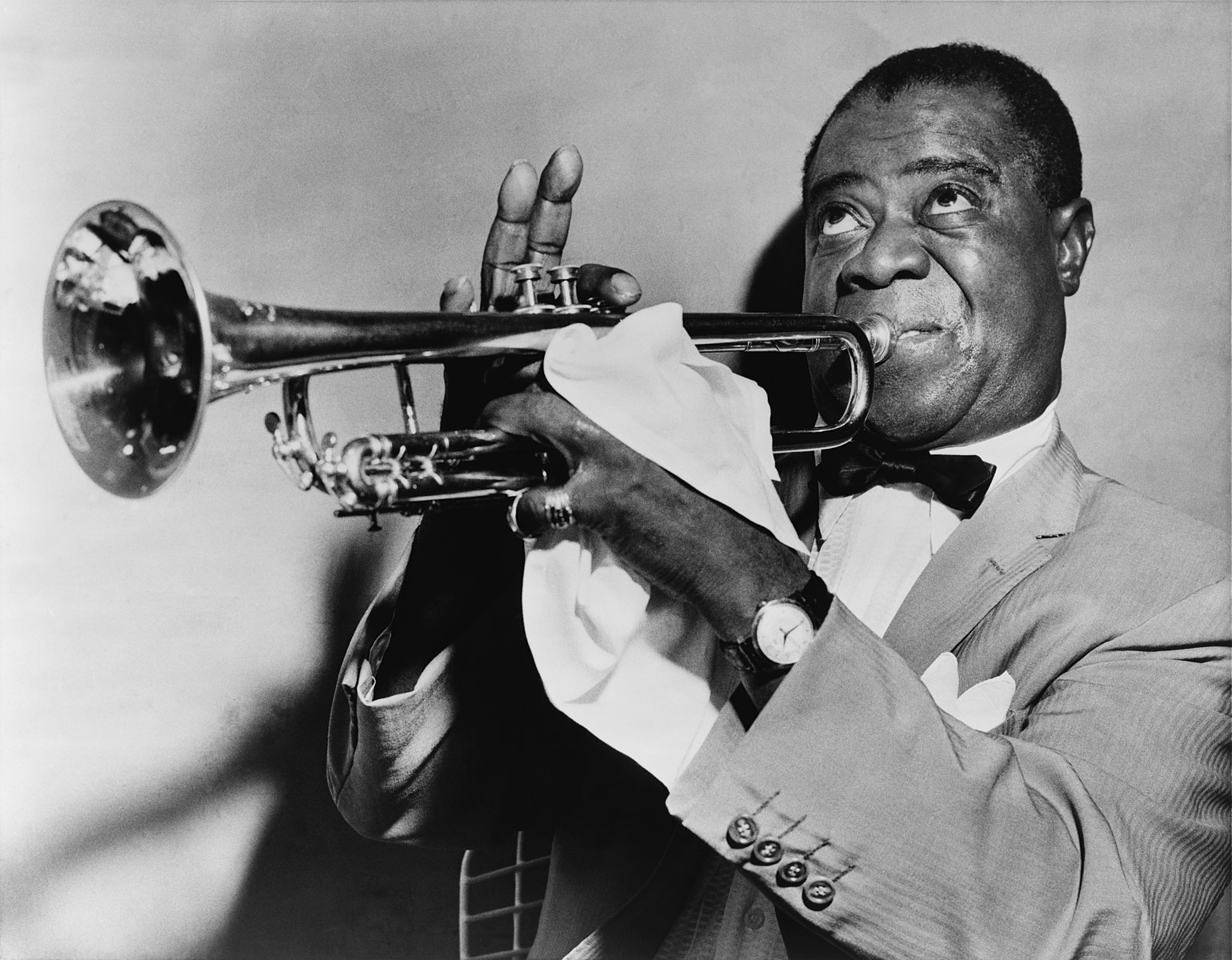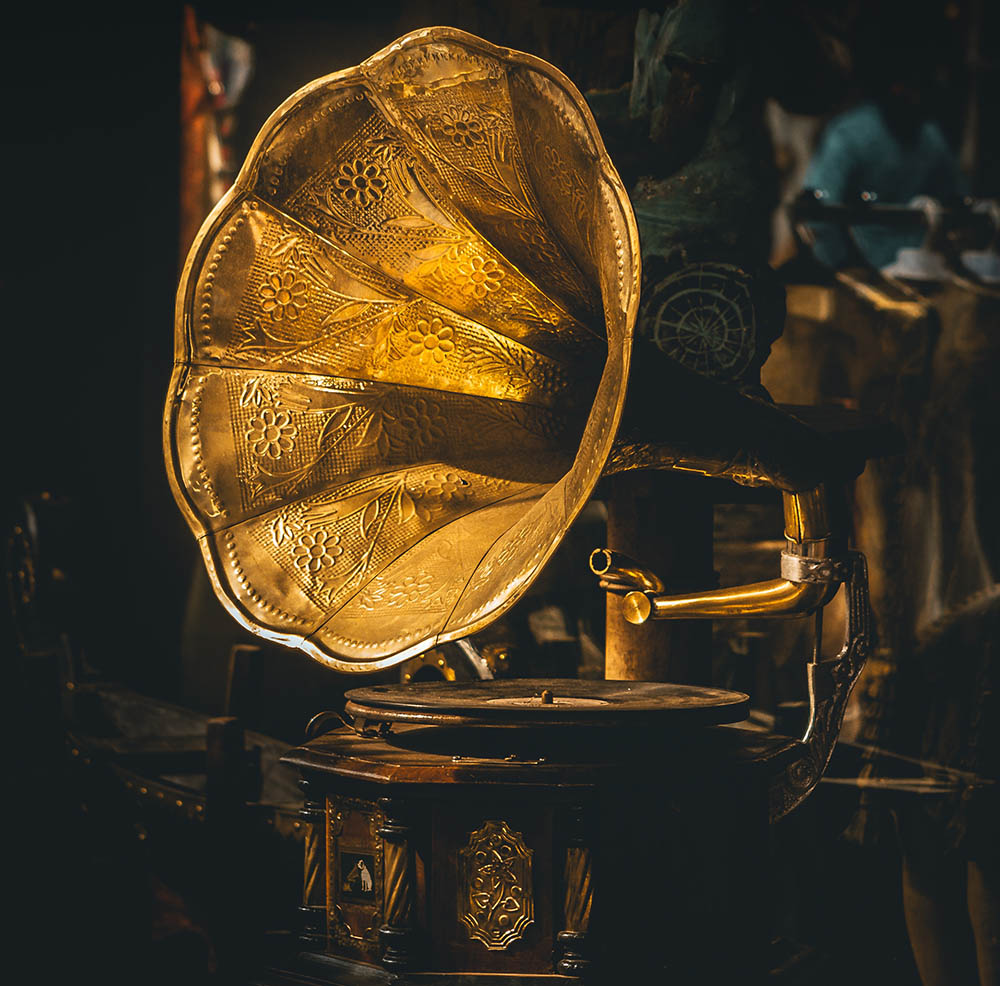Grown Up in the 1920s – Music
12 July 2022
Travel back to the Roaring 20s to revisit the sounds that shaped the decade's youth culture
To celebrate the opening of our new exhibition, Grown Up in Britain, we're taking a trip back in time to explore how youth culture was formed across the decades. This week, we're revisiting the Roaring 20s, beginning with a look at popular music and how it was consumed.

The 1920s was a period of massive growth and innovation in music, witnessing the first electrical recordings, the explosion of jazz music, the proliferation of gramophone players, the beginnings of music radio, and even the advent of the BBC.
Today, the Roaring 20s is most familiar as the dawn of the Jazz Age, giving rise to many stars who remain popular to this day. Mixing elements of blues, ragtime, marching music and African folk rhythms, this new style of music felt fresh and exciting, and was central to the burgeoning interwar youth culture – arguably the first recognised youth subculture.
With a combination of motor vehicles, relative economic affluence after the First World War, and the extension of compulsory education, young people found themselves with more freedom than before, and their new-found free time was often spent dancing and listening to the latest music. The looser clothes styles popularised at this time lent themselves to energetic dances like the Charleston, Shimmy and Black Bottom that became virtually inseparable from jazz music.
In 1917, The Original Dixieland Jazz Band recorded “Livery Stable Blues” – widely considered to be the first jazz record ever released. In the 1920s, King Oliver and his Creole Band continued to innovate, pioneering the use of mutes in jazz to create different musical effects, and releasing the first song with a fully developed trumpet solo with 1923’s “Dippermouth Blues”.
 The song is thought by some to have been written collaboratively with Louis Armstrong, then an up-and-coming performer playing in King Oliver’s band. Armstrong said of Oliver, “if it had not been for Joe Oliver, jazz would not be what it is today.”
The song is thought by some to have been written collaboratively with Louis Armstrong, then an up-and-coming performer playing in King Oliver’s band. Armstrong said of Oliver, “if it had not been for Joe Oliver, jazz would not be what it is today.”
The jazz boom had a knock-on effect on race relations, with many white musicians adopting elements of a style that had emerged from African-American culture, and black and white artists would increasingly perform together. Other popular artists of the time included Mamie Smith, the first African-American artist to make vocal blues recordings; Bix Beiderbecke; Fats Waller, whose developments in the ragtime-influenced stride style laid the foundations for modern jazz piano; Paul Whiteman, known as the ‘King of Jazz’ and Duke Ellington, whose body of work would eventually rack up to over 1000 compositions.
As recorded music became more readily available, international stardom became more attainable, and young people in Britain were increasingly listening to American exports. In the late 19th and early 20thcentury, sound recordings were produced solely by mechanical means, with performers playing their music into a giant trumpet which would capture the vibrations. In turn, the captured vibrations would act on a stylus, creating grooves in a cylinder or disc. The frequency range of these recordings was limited, however, and musicians would need to physically move around the recorder to change the sound.
 At the start of the 20th century though, work was already underway to develop new methods of electrical recording, and in 1920, a recording of the funeral service for The Unknown Warrior in Westminster Abbey became the first electrical recording to be issued to the public. By the end of the decade, all major recording labels were using microphones and electrical recordings in their studio sessions. These developments in sound recording also paved the way for better quality audio to be recorded in the new “talking pictures” or “talkies” – the first films to incorporate recorded sound.
At the start of the 20th century though, work was already underway to develop new methods of electrical recording, and in 1920, a recording of the funeral service for The Unknown Warrior in Westminster Abbey became the first electrical recording to be issued to the public. By the end of the decade, all major recording labels were using microphones and electrical recordings in their studio sessions. These developments in sound recording also paved the way for better quality audio to be recorded in the new “talking pictures” or “talkies” – the first films to incorporate recorded sound.
While sound-on-film recording was used and would eventually overtake sound-on-disc methods, during the 1920s, sound-on-disc was both cheaper and better quality, with a larger dynamic range. In 1927 The Jazz Singer became the first feature film with a synchronised music score as well as lip-synchronised singing and speech, using the Vitaphone sound-on-disc system. Starring Al Jolson, this early musical movie was the beginning of a whole new way of popularising songs and the artists who performed them. The Golden Age of Hollywood was underway!
The first experimental music broadcasts were also made in Britain in 1920, from Marconi’s factory in Chelmsford. In 1922, the British Broadcasting Company was formed by a consortium of companies, with John Reith hired as managing director. It was Reith who advocated for the company to be taken into public ownership, and by 1927, the original company had been dissolved and replaced by the British Broadcasting Corporation, a new public broadcaster with a royal charter.
Want to get a feel for the sound of the 1920s? Have a listen to our Spotify playlist below!
Curated by the Museum of Youth Culture, Grown Up in Britain: 100 Years of Teenage Kicks is free to visit until 12 February 2023.